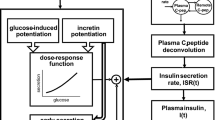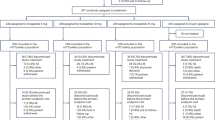Abstract
Type 2 diabetes mellitus is characterised by abnormal beta-cell function (present at the time of diagnosis) that is often associated with insulin resistance. An important and consistent pathophysiological finding is the failure to produce adequate increments in insulin secretion in response to carbohydrate intake. Therefore, insulin secretagogue therapy, particularly when focused on prandial glucose regulation, is a logical approach to treatment because it addresses one of the most fundamental pathophysiological aspects of the disease. However, the traditional secretagogues—the sulphonylureas—have long been associated with the unwanted effect of hypoglycaemia. This is particularly likely to occur when drugs with lengthy plasma half-lives, prolonged drug–receptor interactions, active metabolites or a reliance on renal clearance are used. The problem is most prevalent in elderly patients, where sulphonylurea-induced hypoglycaemia may be related to failure to comply with strict mealtimes or the need for supplementary food intake, often in the context of compromised renal function.
Data from large-scale outcome studies demonstrate that when tight glycaemic control is achieved through aggressive antidiabetic therapy, late diabetic complications can be significantly reduced. However, the pursuit of stricter HbAlc targets with more aggressive interventions may increase the risk of hypoglycaemia. This is an irony because the clinical need to avoid hypoglycaemia and patients' apprehension of it present barriers to the achievement of beneficial glycaemic targets.
However, an increased risk of hypoglycaemia may not be inevitable with insulin secretagogue therapy. The recently introduced carbamoylmethyl benzoic acid derivative, repaglinide, has pharmacological properties that are well suited to its intended role as a prandial glucose regulator. When taken prior to main meals, the rapid onset and relatively short duration of action of repaglinide aid disposal of the mealtime glucose load, without continued stimulation of pancreatic beta-cells in the postprandial fasting period. Repaglinide is also characterised by hepatic metabolism and elimination, which is an advantage in the context of impaired renal function. Prandial glucose regulation with repaglinide selectively increases insulin secretion, and hence limits glucose excursions, in the prandial phase. If a meal is omitted, so too is the corresponding dose. This more flexible approach to the management of Type 2 diabetes has a number of advantages when compared with the fixed daily dosing regimens of sulphonylureas, among them a reduced risk of hypoglycaemia—a benefit that is particularly marked in the context of missed or irregular meals.
This is a preview of subscription content, access via your institution
Access options
Subscribe to this journal
Receive 12 print issues and online access
$259.00 per year
only $21.58 per issue
Buy this article
- Purchase on Springer Link
- Instant access to full article PDF
Prices may be subject to local taxes which are calculated during checkout
Similar content being viewed by others
Author information
Authors and Affiliations
Rights and permissions
About this article
Cite this article
Nattrass, M., Lauritzen, T. Review of prandial glucose regulation with repaglinide: a solution to the problem of hypoglycaemia in the treatment of Type 2 diabetes?. Int J Obes 24 (Suppl 3), S21–S31 (2000). https://doi.org/10.1038/sj.ijo.0801422
Published:
Issue Date:
DOI: https://doi.org/10.1038/sj.ijo.0801422
Keywords
This article is cited by
-
Diabetes Management in Older Adults With Chronic Kidney Disease
Current Diabetes Reports (2019)
-
Fear of hypoglycaemia: defining a minimum clinically important difference in patients with type 2 diabetes
Health and Quality of Life Outcomes (2009)
-
Practical strategies to normalize hyperglycemia without undue hypoglycemia in type 2 diabetes mellitus
Current Diabetes Reports (2008)



